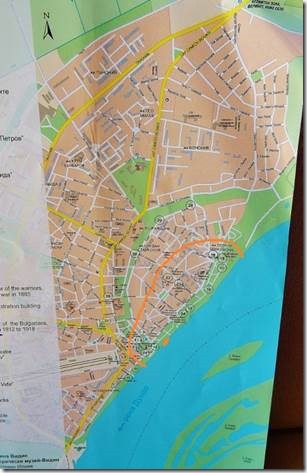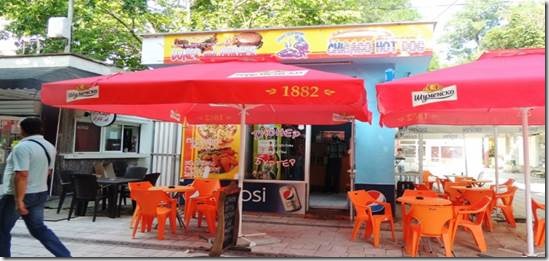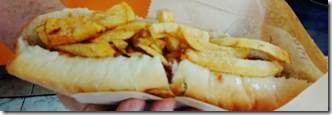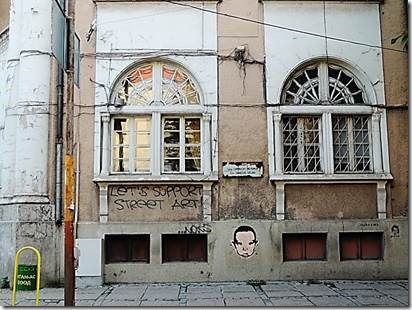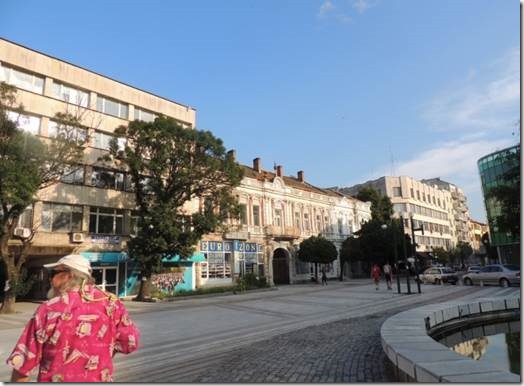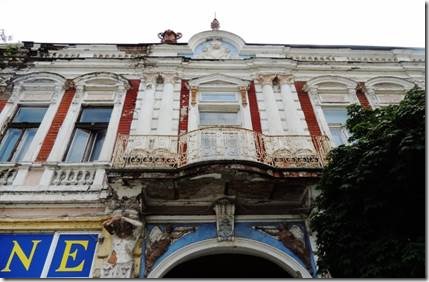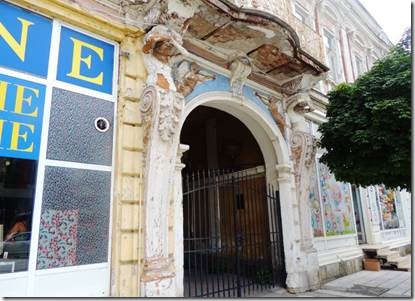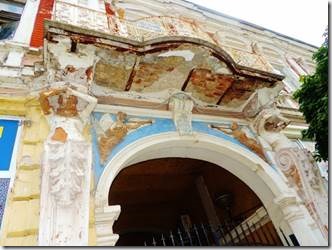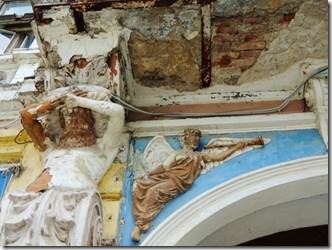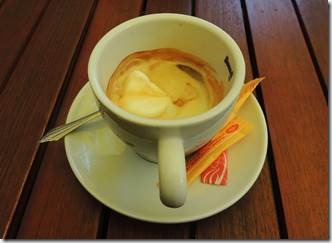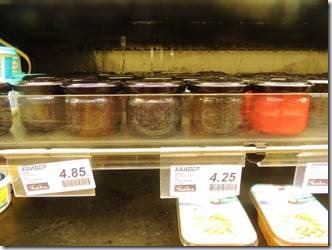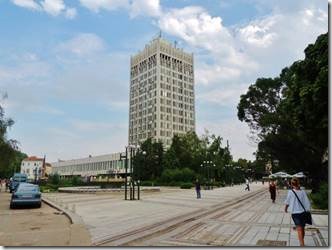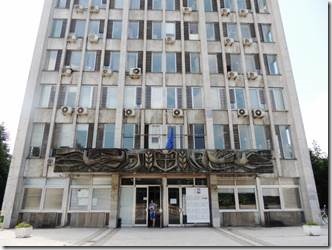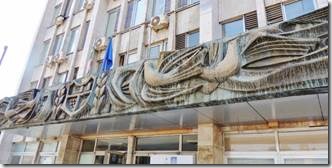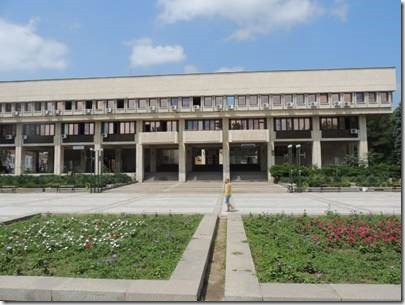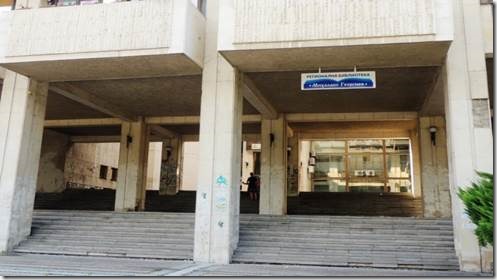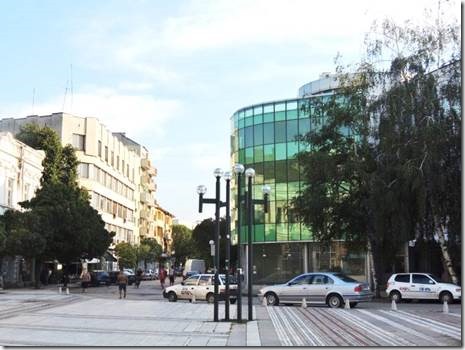Republika Restaurant
Tulcea, Romania
Vidin had a mix of architectural styles and some interesting food choices.
Ru
Vidin The Town
Vidin was big enough to be entertaining but small enough that you could do it all on foot. Not that we did it all. I’d like to be able to click my heels together and be back for one more day to explore the park that is on the far side of town.
Some recent Vidin developments.
The New York Times
June 14, 2013
New Bridge Over Danube Helps Dissolve Old Enmities
By MATTHEW BRUNWASSER
VIDIN, Bulgaria — The European Union hardly basks in popular favor these days. But in this isolated corner of the bloc’s poorest periphery, leaders and locals on Friday celebrated a tangible benefit of membership — a $340 million bridge spanning the Danube that should help strengthen trade and ties between two impoverished members, Romania and Bulgaria.
Despite much history and present poverty in common, these two Balkan nations had to be prodded into negotiating the construction of the bridge, which began in 2007. Both prime ministers and the European Union’s commissioner for regional policy, Johannes Hahn, attended the opening ceremony, where Plamen Oresharski, the head of Bulgaria’s new government, joked: “I am sorry that this bridge has such a long history. We heard that the Romans built faster.”
Romania, population roughly 22 million, and Bulgaria, about 7 million, share a 290-mile border along the Danube that, until Friday, had just one bridge connecting them.
Under Communism, neither country was rich, but the collapse of their state-run economies deepened the impoverishment on both sides of the river and hastened depopulation. Vidin, which in bygone Ottoman days was a thriving river port, shipping agricultural produce along the Danube, has suffered the worst depopulation in Bulgaria, losing 16 percent of its residents in 2012 alone.
Across the river, the Romanian town of Calafat, population 18,000, has fared little better. Its central pedestrian street, recently fitted with new paving stones, remains sleepy.
Yet it took until 2000 for European officials to coax the two very different Balkan nations into talking about the bridge, largely because they could not agree on a location for it.
Romanians speak a language they prize as descended from Latin roots; Bulgarians are Slavs and in Communist times were derided as being so close to Moscow as to be the virtual 16th republic of the Soviet Union. Each country adheres to its own Orthodox church, and for decades were simply disinterested in each other.
Their shared status in European development post-cold war has gradually brought them closer, as they have discovered more in common.
Both joined NATO in 2004, and the European Union in 2007. European Union officials have since criticized both nations, the bloc’s poorest members, for corruption and organized crime — some of which originated in the Vidin region in the 1990s, when criminals helped smuggle oil and other goods into neighboring Serbia, which was under United Nations sanctions for its role in the Balkan wars that broke up the former Yugoslavia.
“The illusions we created about what enemies the Romanians are and how different they are have disappeared into dust,” Gergo Gergov, the 35-year-old mayor of Vidin, said in an interview in the 15-story, Communist-era municipal building, by far Vidin’s tallest.
“We have stopped acting like we are locked up alone,” Mr. Gergov observed. “We have seen that there are other people around and have started to get to know them, to interact, trade, travel and work with each other.”
The bridge, he said, is “the biggest event in the modern history of the region.”
Vidin — which has a population of 63,000, down from 90,000 during the Communist era — could use the help. Its center, replete with decaying architecture from 19th-century glory days, offers some exotic sights for visitors who disembark every summer day from luxurious Danube cruise ships. A balmy river breeze spreads the sweet smell of linden through the city. But Vidin remains the poorest city and region in Bulgaria, the European Union’s poorest member state with average monthly wages of 400 euros, or about $574.
The common market offered by European Union membership has catalyzed trade and business: trade between Bulgaria and Romania totaled 3.5 billion euros, or about $5 billion, in 2011, up from 900 million euros in 2005, about $1.09 billion at the time.
Ovidiu Cernatescu, 45, a Romanian from Craiova who started a metal construction business in Vidin two years ago and sells 90 percent of his product in Romania, is confident of further expansion and relishes the protection offered by European Union trade rules rather than capriciously applied local justice. “I’ve been waiting for the bridge like the coming of Jesus Christ,” he said.
Ten years ago, Mr. Cernatescu said, Romanians had heard only negative news about Bulgaria as a country where former Communists still held sway. Now, Romanians enjoy it as a cheaper, nice place to visit and trade, he said.
Bulgarian businesspeople in the region like Kostas Grivov, who employs 100 workers in two factories processing nuts and dried fruit, are expecting a short-term boom in tourism, shopping and investment.
Mr. Grivov, who is also Romania’s honorary consul in Vidin, said the bridge would halve his transport costs and greatly increase the speed and reliability of supplies and deliveries. The sole way to Romania had been an unreliable ferry that crosses only when it fills with cars.
In Calafat, the deputy mayor, Dorel Mituletu, sits in a restored late-19th century mansion that might be the envy of his Vidin counterparts. He welcomed the bridge, but said he feared merchants in his town would lose out to Vidin, where prices are 20 to 25 percent lower.
He also voiced concern about what he saw as difficult and complex procedures required to secure European Union financing for local projects — processes that have become stricter because of concerns about corruption and mismanagement.
“Romanians are not accustomed to begging,” he said. “Despite what the rest of Europe might think of us.”
Interestingly we couldn’t get to Calafat because the ferry stopped running when the bridge was completed but there were no buses across. You had to take a taxi. We opted to stay in Vidin instead of making the trip across.
http://dunavision.eu/ is a story about two people making a change for the better in Vidin. I’m so sorry we didn’t eat in the café mentioned but I only just read about it now. But if you are ever in Vidin…..
12 March 2014
The Britons who swap the UK for the poorest part of the EUMatthew Price
By Matthew Price
What’s it like to live in the poorest part of the poorest country in the European Union?
http://www.bbc.com/news/uk-26324564
|
DoraMac is the orange bit on the water. We pretty much stayed between the water and the orange line. |
|
Chicago hot dog in Vidin Bulgaria. Served in a thick sort of pita with fries on top. Rick and Randal each ate one. Mary and I took a pass because it was after lunch and too early for dinner and too big for a snack. |
|
Thanks to our Alternative Art/Street Art walking tour in London we’re all more supportive of street art. I found it interesting that the message was written in English. |
|
There was a EURO store where things cost a Euro. The building next door was more interesting to me. |
|
Lots of lovely detail now falling to bits. You saw lots of this lovely architecture just waiting for some help. They need an influx of Yuppies with money from somewhere. |
|
After some walking around it was time for a cold drink break. Mary ordered a white frappe but Rick, Randal and I ordered iced coffee. Amazingly this turned out not to be the strangest iced coffee of the trip. This was a cup of strong hot coffee with a small scoop of vanilla ice cream floating in it. So far it is the iced coffee in Silistra that wins the prize; at least as I’m typing now. That was a blob of frozen iced coffee crystals floating in Coca Cola. A total sugar and caffeine shock. I had a few bites of the “iced coffee crystals” and Randal drank the rest of the Coke that was served with the “iced coffee.” Randal had ordered cappuccino but it tasted more like hot chocolate. You just never know. |
|
There was a small mall with a grocery store in the town center. We went in for the basics : bread, fruit and vegetables and wine and cookies. We’ve been eating out more because the dollar is strong against these currencies so restaurants are much more reasonable than they were further west. Varieties of what looked like caviar and oddly we bought none. If we see it again, I will. At least it looks like caviar? |
|
City Hall is the tallest building in Vidin. Obviously built without central air. |
|
I think this is the municipal building and the law courts in Bdintsy Square. Somewhere in here is the Mihalaki Georgiev Regional Library, but I couldn’t find it. The stairwells were dark and each room was closed to the hall way to keep the AC in. I walked up all of the flights and finally met a woman who tried to find someone who spoke English/ or wanted to come help. No one did so that was that. The second part of the word ends in teka and it looks like a book so I guessed the library was inside someplace. |
|
Some newer buildings mixed with old. But all of it looks a bit down on its luck though it’s hard to look totally upbeat when it’s broiling hot out. |

